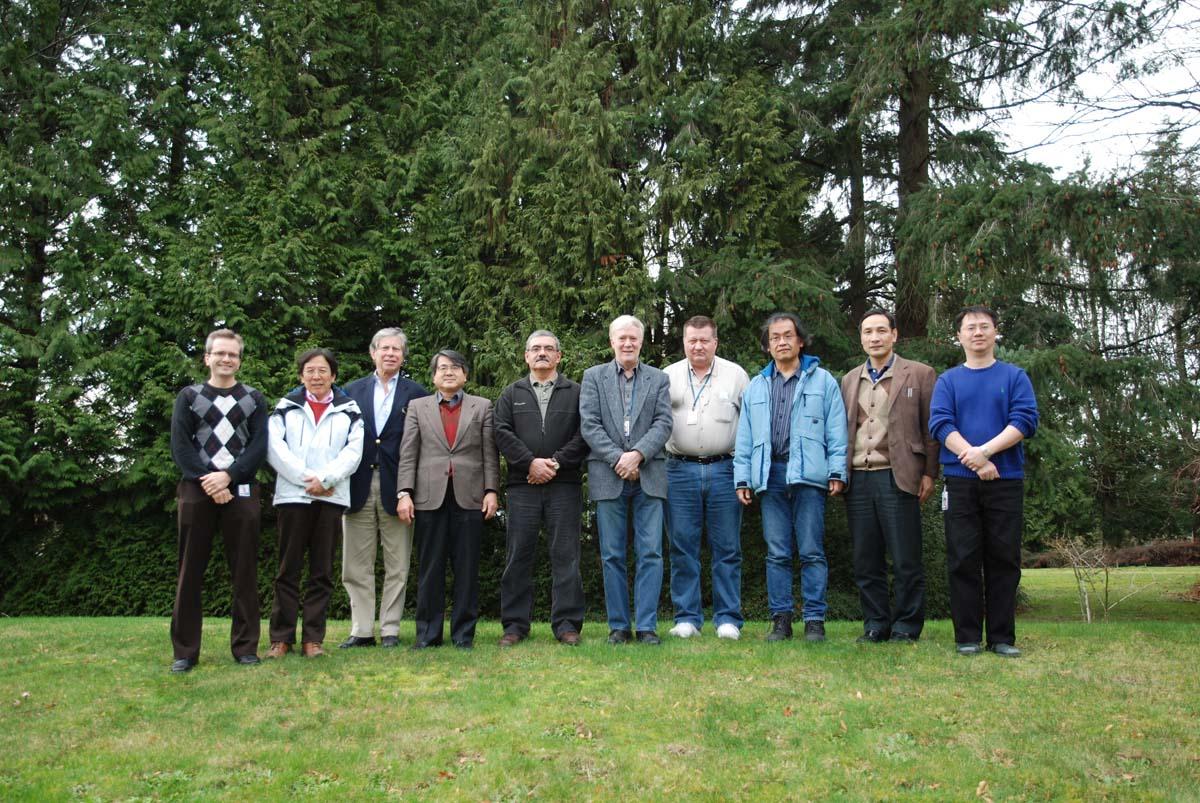 |
| TRIUMF scientists with members from the Japan Society for Promotion of Science |
On January 20th to 22nd, scientists from Canada and Japan gathered at TRIUMF to discuss plans for the proposed Ultra Cold Neutrons (UCN) facility in the TRIUMF Meson Hall. The project was highlighted in the TRIUMF 5-Year Plan as a university initiative led in Canada by the University of Winnipeg and the University of Manitoba.
In June of 2009, the project received funding from the Canada Foundation for Innovation with matching contributions from the Japan Society for the Promotion of Science (JSPS). TRIUMF will be a contributor to the project as well. At their meeting, the collaboration reviewed their plans and progress and identified the key milestones for securing final approvals to implement the project.
The UCN facility at TRIUMF will provide the highest density of cold neutrons in the world. It will enable a new generation of experiments on the fundamental interactions of neutrons to be conducted with higher precision than ever before. For example, the facility will allow experimenters to precisely measure neutron beta decay and quantum levels of neutrons in Earth's gravitational field. The new UCN source will also facilitate the search for the non-zero neutron electric dipole moment (nEDM). This source will make a major impact on studies of fundamental physics that would complement and enhance the existing ISAC program at TRIUMF.
"The TRIUMF UCN source would be a world-leading facility which would bring in a new set of international users. The Japanese funding commitment is clear evidence of this," said Professor Jeff Martin, project partner at the University of Winnipeg.
UCN are free neutrons that are moving very slowly (typically less than 30km/h!), due to their low energies. "UCN are interesting," explained Professor Martin, "because, unlike fast-moving neutrons, they are totally reflected from surfaces of a variety of materials. This means that they can be stored in bottles for an extended period of time (hundreds of seconds), allowing researchers to measure their fundamental properties for much longer than they could using earlier techniques."
-- Melissa M. Baluk, Communications Assistant
